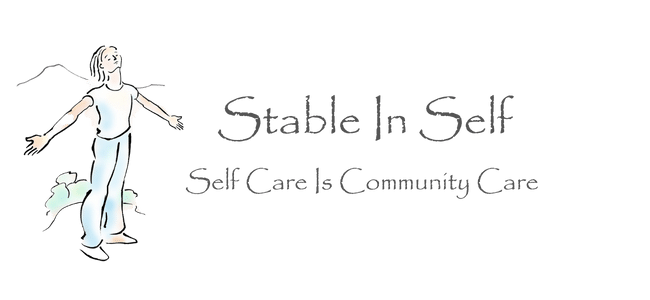Rituals For Moving From Winter Into Spring
Spring is a time of inspiration and transformation. We shed what has built up during the Winter months, reflecting on the opportunity to emerge anew, and opening up to the continual becoming that is our being. Embrace this time of seasonal transition, and allow yourself to renew commitments and welcome growth within and without. Creating seasonal rituals is a way to honor mother nature and offer touchstones and sacred space for your own seasonal cycles.
Transforming What No Longer Serves
Create space in your daily routine for writing, drawing, painting, or whatever medium you are drawn to. On paper, express what you are ready to release, what no longer serves. This practice can be a one-off exercise or a daily or weekly practice for a period of time. When you are ready (or even if you are not) ceremonially burn the paper, allowing the fire to transform you and your situation. Watch the flames, bringing honor to this transition.
The following questions may be helpful provocation for your writing, drawing, painting, etc.
How have I been feeling in my daily activities and relationships?
What would I like to leave behind as I emerge into this new season of growth?
How can I allow the fire element to help transform me into what I am already becoming?
Planting Seeds Of Intention
Putting intention into actual seeds, you will plant these seeds to encourage and honor your intentions for the season ahead. Reflecting on re-birth, you will plant your intention into mother earth. Using water to nourish these seeds of intention, you will watch your intentions sprout and grow. The water element brings life to the seeds as the earth element nourishes and protects them. Over the weeks of tending to your emerging intentions, the seedlings sprout into existence with the help of the fire element, the sun. Fire is the element of transformation, assisting your intentions to blossoms.
Some things to consider:
Choose any seeds you like. Perhaps some herbs that you feel are good medicine for you, flowers that bring you joy, or vegetables that you feel nourished by.
Seedlings need care and attention, just like you. Find a good spot to put the seedlings where you can care for them and allow them to nourish your daily spiritual practice.
If you enjoy singing or chanting mantra, you can incorporate this into the planting ritual and daily ritual of being with the seedlings.
Some questions for reflection:
What does my being crave to offer to the world around me?
What does the world around me, crave to offer me?
Prānāyāma Breathing Practice
This is a great time of year to bring back some more vigorous or focused breathing practices. Stagnation from the Winter season often builds in the body-mind-spirit, and we may need a little encouragement to help get moving again. Bringing breath into your daily practice is helpful at all times of the year, and now is a great time to begin a prānāyāma breathing practice or recommit to a practice you've let go of. Please remember to consider your own unique constitution (prakriti) and your current state of being (vikriti).
NādĪ Śodhana - Alternate Nostril Breathing
Benefits: Calms, centers, and strengthens the nervous system and helps to bring balance to the entire body-mind-spirit.
Action On Doṣa: Pacifies VPK – Especially calming to VP.
Instructions:
Use your right hand/fingers to alternately open and close the right and left nostrils. The pointer and middle finger are closed into the palm, and the thumb and ring finger are used to close off alternating nostrils.
Begin by closing right nostril with the thumb and inhaling gently through the left nostril.
Close the left nostril, retaining the breath for as long as the inhale. It is okay to do a shorter breath retention, or even a brief pause.
Open right nostril and gently exhale the same amount of time as the inhale.
Inhale through the right nostril.
Close the right nostril, retaining the breath for as long as the inhale. It is okay to do a shorter breath retention, or even a brief pause.
Open the left nostril and gently exhale the same amount of time as the inhale.
This completes one round. Continue as desired.
This exercise can be practiced without using your hands at all, and visualizing the breath moving through each side of the body respectively. The idea of inhaling, retaining breath, and exhaling, for equal amounts of time is meant to be balancing. It is okay if the timing is off, especially when you are fist learning.
Kapālabhāti - Skull-polishing Breath
Benefits: This breath illuminates and enhances the brilliance of the mind. It helps to awaken the body’s inner intelligence, which is often buried beneath accumulated toxins. The practice can cleanse cellular toxins, making it helpful for people with autoimmune diseases and systemic toxicity. It cleanses the physical and energetic channels without generating excess heat.
Action On Doṣa: Pacifies PK, generally increase V but can be done slow and gentle.
Contraindications: Unmedicated high blood pressure, recent abdominal surgery, detached retina, pregnancy, during heavy days menstruation.
Instructions:
Focus is on the exhalation, the inhale is passive. Each inhale occurs passively as a natural result of the muscles relaxing after the short and forceful exhalation.
Take a full inhale and then exhale completely.
Inhale fully again, and begin to make rapid forceful exhalations as you breathe only out of the nose. Your stomach will be contracting in toward the spine as you exhale.
Repeat the forceful exhales as desired. Begin slowly, and build up. Once finished, sit and rest until breathing normalizes. If you become light headed, stop immediately and rest.
